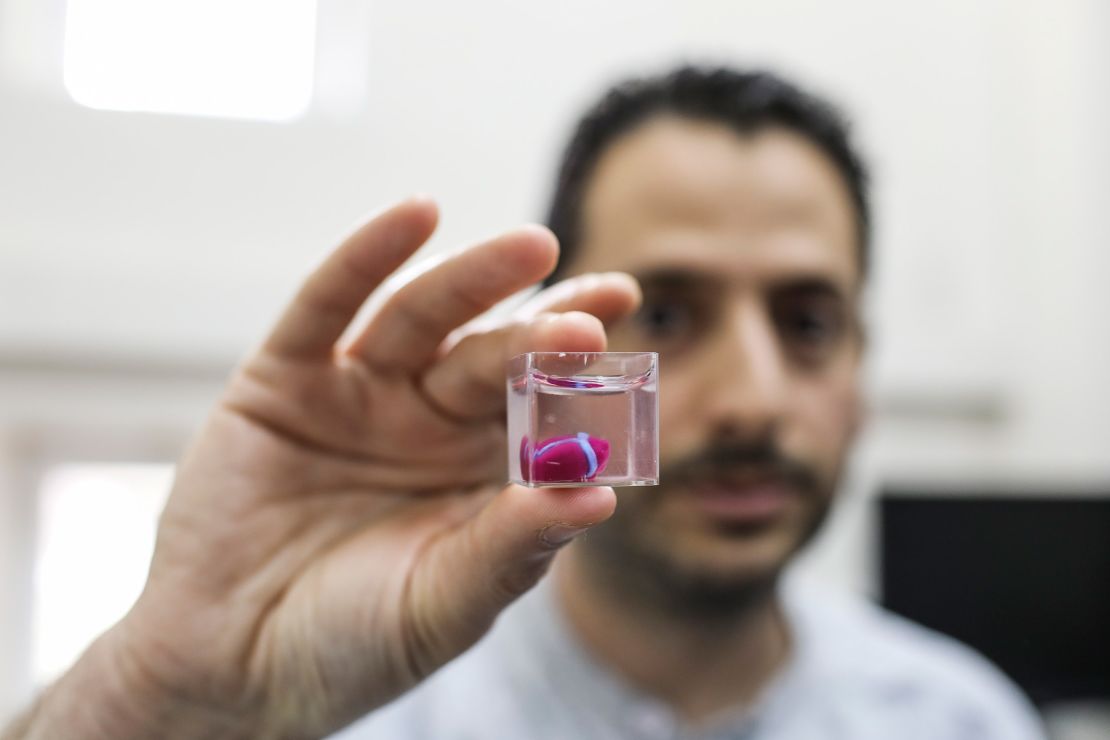Researchers have 3D-printed a heart using a patient’s cells, providing hope that the technique could be used to heal hearts or engineer new ones for transplants.
“This is the first time anyone anywhere has successfully engineered and printed an entire heart replete with cells, blood vessels, ventricles and chambers,” Professor Tal Dvir of Tel Aviv University’s School of Molecular Cell Biology and Biotechnology said in a statement. Dvir is senior author of the research, published Monday in the journal Advanced Science.

The process of printing the heart involved a biopsy of the fatty tissue that surrounds abdominal organs. Researchers separated the cells in the tissue from the rest of the contents, namely the extracellular matrix linking the cells. The cells were reprogrammed to become stem cells with the ability to differentiate into heart cells; the matrix was processed into a personalized hydrogel that served as the printing “ink.”
The cells and hydrogel were first used to create heart patches with blood vessels and, from there, an entire heart.
“At this stage, our 3D heart is small, the size of a rabbit’s heart,” Dvir said. “But larger human hearts require the same technology.”
Previously, scientists had been able to print only simple tissues without blood vessels.
Cardiovascular disease is the leading cause of death in the developing world. Heart transplantation is the only way to treat end-stage heart failure, highlighting the importance of developing techniques such as 3D printing, according to the authors.
Dvir also explained that using the patient’s own cells is key to engineering the tissues and organs.
Get CNN Health's weekly newsletter
Sign up here to get The Results Are In with Dr. Sanjay Gupta every Tuesday from the CNN Health team.
“The biocompatibility of engineered materials is crucial to eliminating the risk of implant rejection, which jeopardizes the success of such treatments,” he said.
Next, the researchers plan to train the hearts to behave like hearts, Dvir explained. “The cells need to form a pumping ability; they can currently contract, but we need them to work together.”
If researchers are successful, they plan to transplant the 3D-printed heart in animal models and, after that, humans.
“Maybe, in ten years, there will be organ printers in the finest hospitals around the world, and these procedures will be conducted routinely,” Dvir said.

